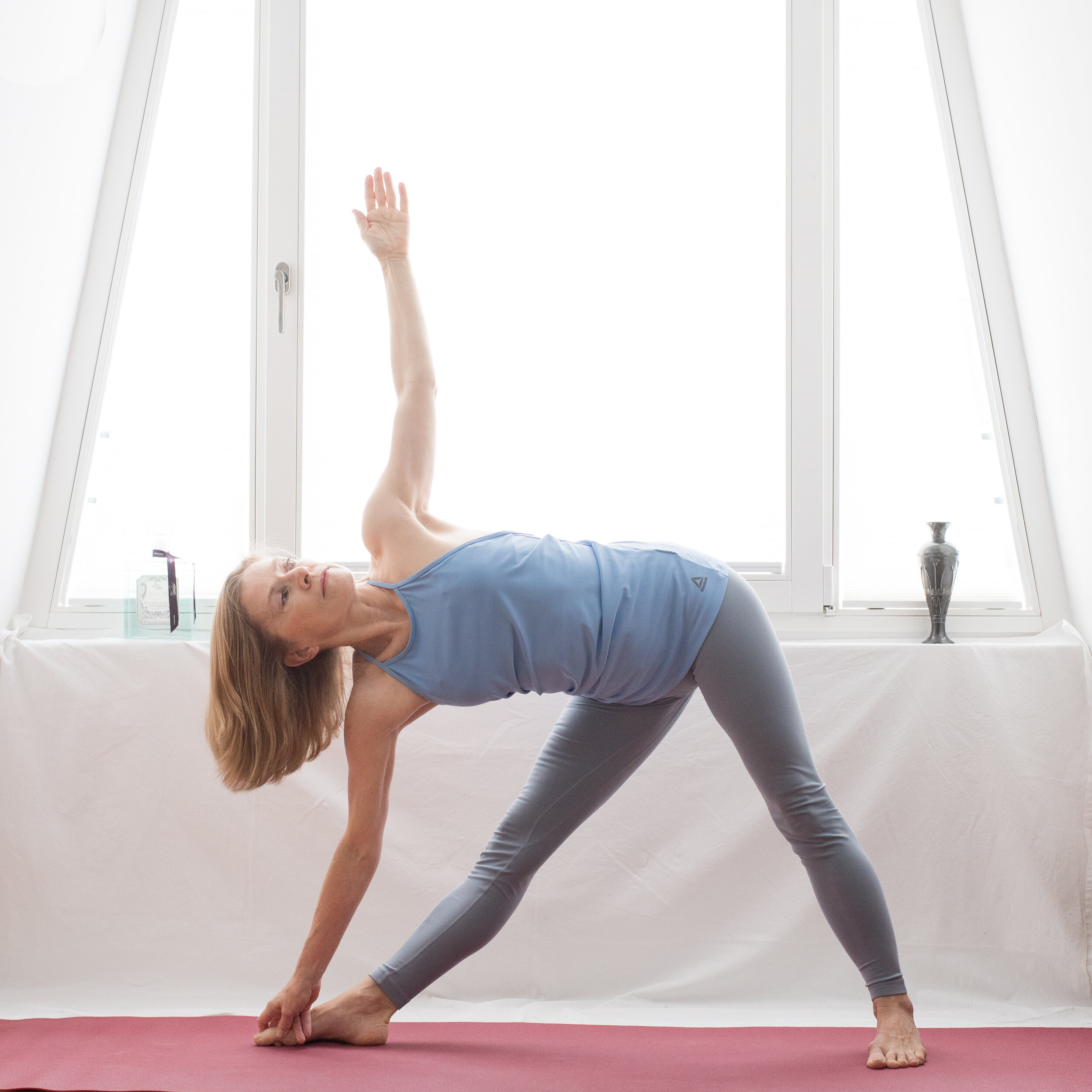I’ll probably repeat the following sentence again and again: There is no easy asana. When practicing Ashtanga yoga the practice starts with the sun salutations. Then follow the standing asanas. They are difficult. All poses feel differently than they look. It’s a challenge to adjust oneself.
All standing asanas are balancing asanas. To engage the legs is important. The feet rather move to each other than apart from each other. The upper body is straight. In order to open the shoulders it can help to move the arm behind the back to the thigh. This allows to give oneself a nice adjustment, it helps to move the shoulder backwards. To stretch the arm like in the second pictures supports the straight line of the body.
To have a correct head position is not easy, too. It’s already good, when the head doesn’t hang. This looks lazy.
Many call this pose tri konasana, the full name is utthita tri konasana. Utthita translates ‘stretched’, konasana means ‘triangle’. The pose forms only straight lines with the body. Having the word stretched in mind helps to give meaning to the asana.
It’s a pose that is great for pictures. Arms, legs and the body are seen clearly. The limbs are separated from each other. It’s an asana that opens the upper body.
My yoga week began this morning at 6 am. At 5 am I got up, at 6 am I was ready. It was still dark, yet I didn’t like to switch on a light because I didn’t like to wake up my beloved E. It was absolutely OK to start before sun rise. It’s not necessary to see the details of the surrounding. At 9 am I had an intensive practice behind me, I was showered and I enjoyed a tiny breakfast. What a start.

